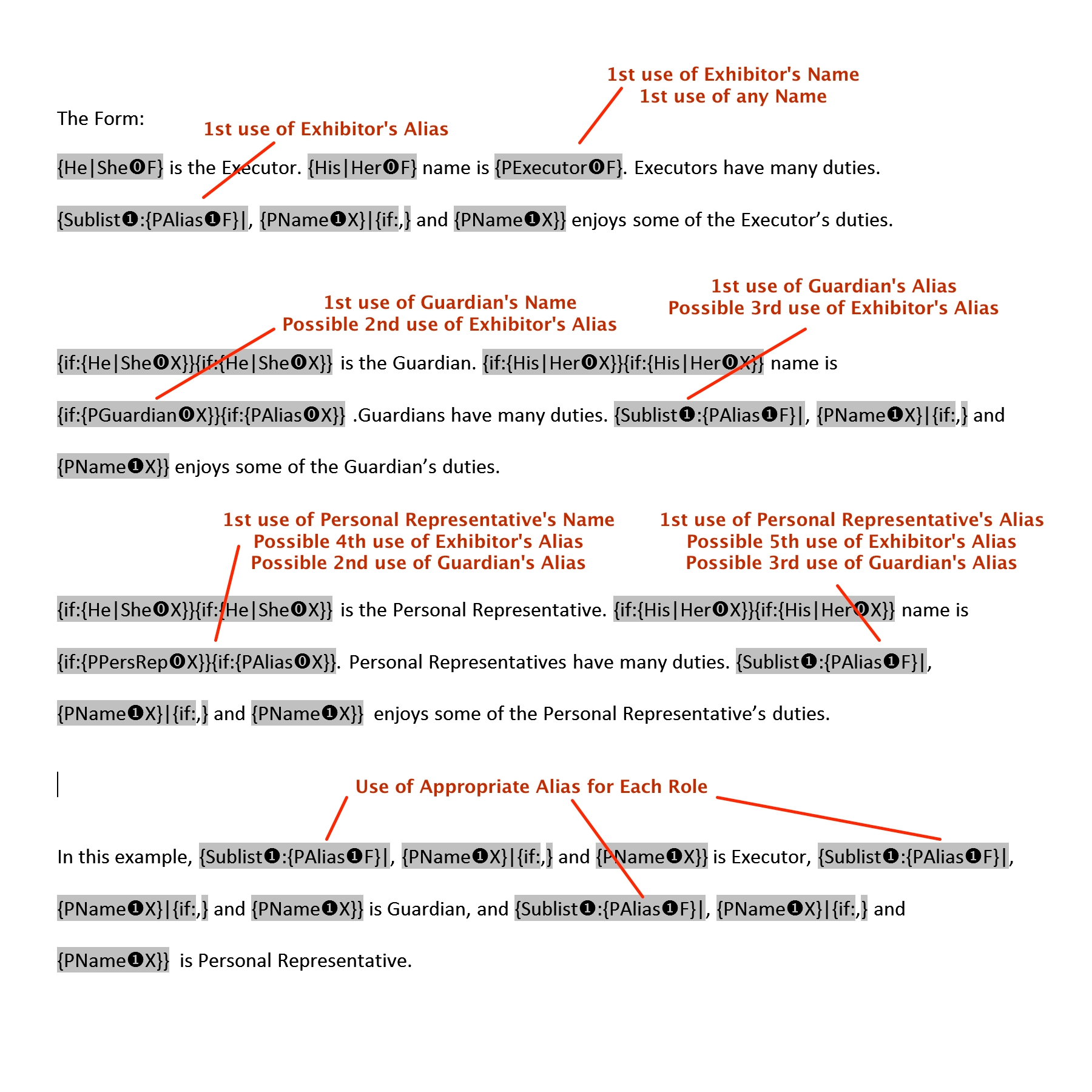TLC 7 Multi-Party, Multi-Role Decisioning in Specific Order
Most of us are familiar with multi-party or multi-item uses of our software, where there are several signers, several choices from a sale catalog, or several symptoms described in a neurological exam. The “answer”, of course, is a List. Piece of cake.
It’s a little more complex to combine multiple parties and multiple roles. The best approach will typically include a GRID using checkboxes or dropdowns to capture the Roles. Even accommodating multiple roles for each person (executor and beneficiary, or all-terrain and mud and snow for a tire.
Where things start to get really complex is when a specific role order is required
Here is an example that completes several tasks simultaneously:
1. All first uses in the form will use the formal name, and
2. All second uses will use the alias, and
3. These rules apply within AND between roles so that if Andrew is the both the Executor (first role and first use) and the Guardian (second role and second use), Andy will be the name used for Guardian. But if Elizabeth is the Guardian, Elizabeth will be the name used. This rule will apply for any number of Roles and any number of Parties.
The solution:
While solving the problem is simple and straightforward within a Role, it becomes complex when the rules need to be applied across Roles. The key is to know in advance the order in which the Roles will appear in the form. With that, the program can be built to recognize first uses and with that data, can determine first uses versus second uses by the Roles selected in the Grid. This example uses checkboxes and separate Role Labels for simplicity, but other arrangements will likely also work. Pronouns are included in the example as illustrative.
An example:
{He|SheF} is the Executor. {His|HerF} name is {PExecutorF}. Executors have many duties. {Sublist:{PAliasF}|, {PNameX}|{if:,} and {PNameX}} enjoys some of the Executor’s duties.
{if:{He|SheX}}{if:{He|SheX}} is the Guardian. {if:{His|HerX}}{if:{His|HerX}} name is {if:{PGuardianX}}{if:{PAliasX}} .Guardians have many duties. {Sublist:{PAliasF}|, {PNameX}|{if:,} and {PNameX}} enjoys some of the Guardian’s duties.
{if:{He|SheX}}{if:{He|SheX}} is the Personal Representative. {if:{His|HerX}}{if:{His|HerX}} name is {if:{PPersRepX}}{if:{PAliasX}}. Personal Representatives have many duties. {Sublist:{PAliasF}|, {PNameX}|{if:,} and {PNameX}} enjoys some of the Personal Representative’s duties.
In this example, {Sublist:{PAliasF}|, {PNameX}|{if:,} and {PNameX}} is Executor, {Sublist:{PAliasF}|, {PNameX}|{if:,} and {PNameX}} is Guardian, and {Sublist:{PAliasF}|, {PNameX}|{if:,} and {PNameX}} is Personal Representative.

A working example Word document is attached to this article.
tags: multiparty, multirole, complex roles, Stefano, pecking order, executor, trustee, guardian, successor